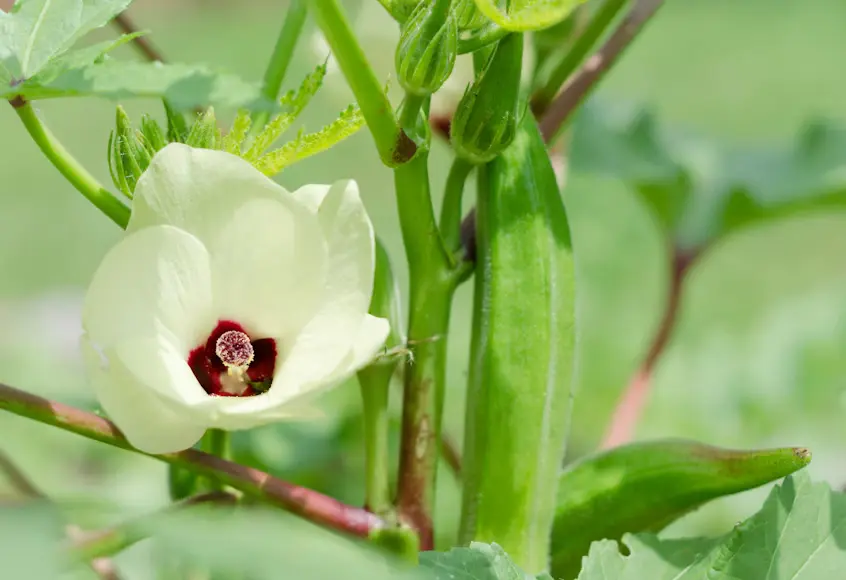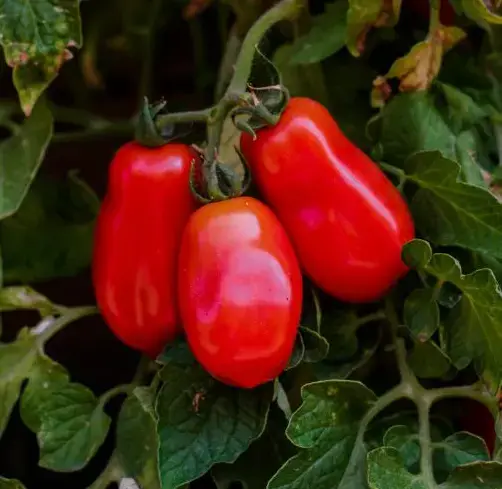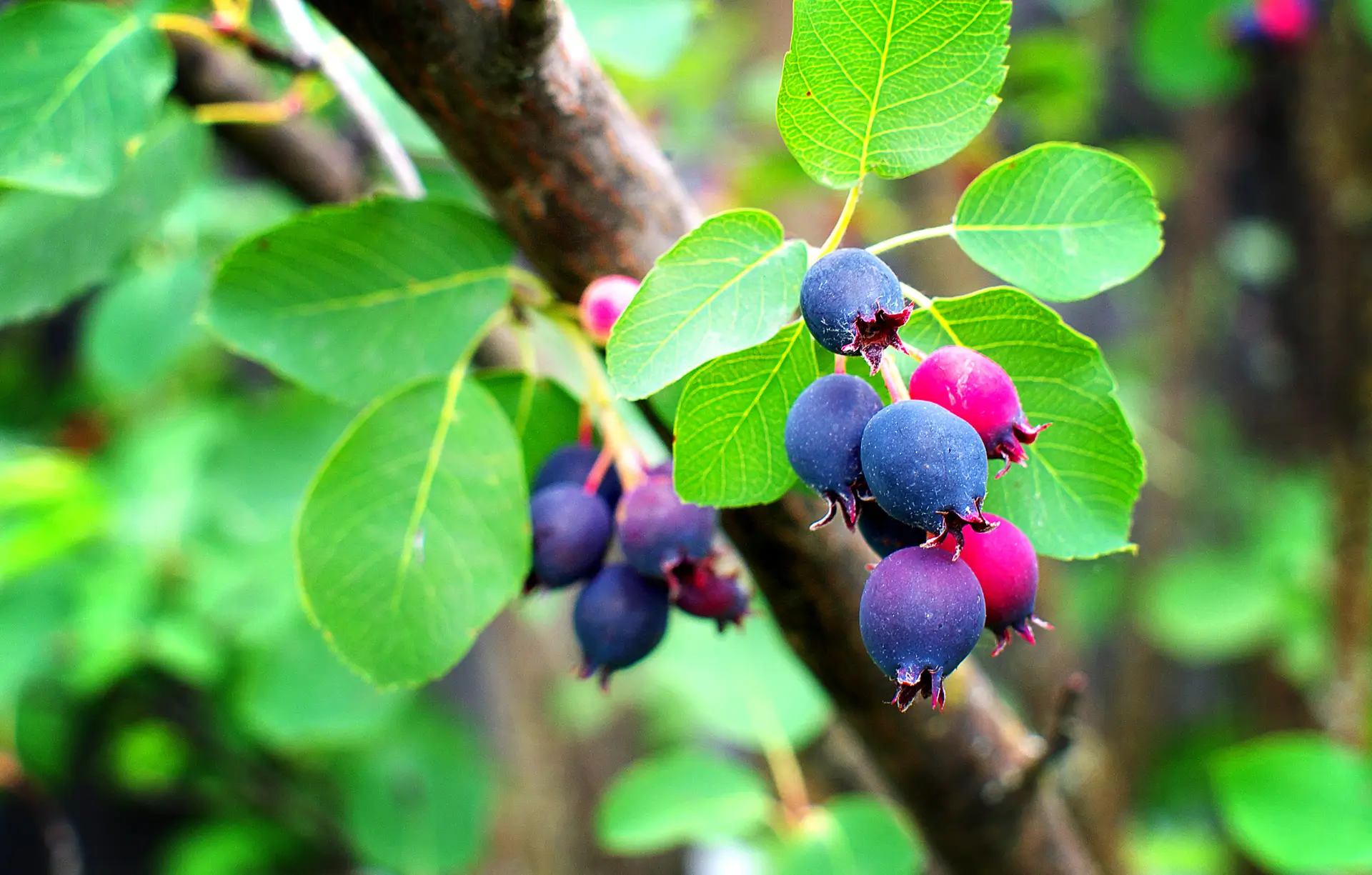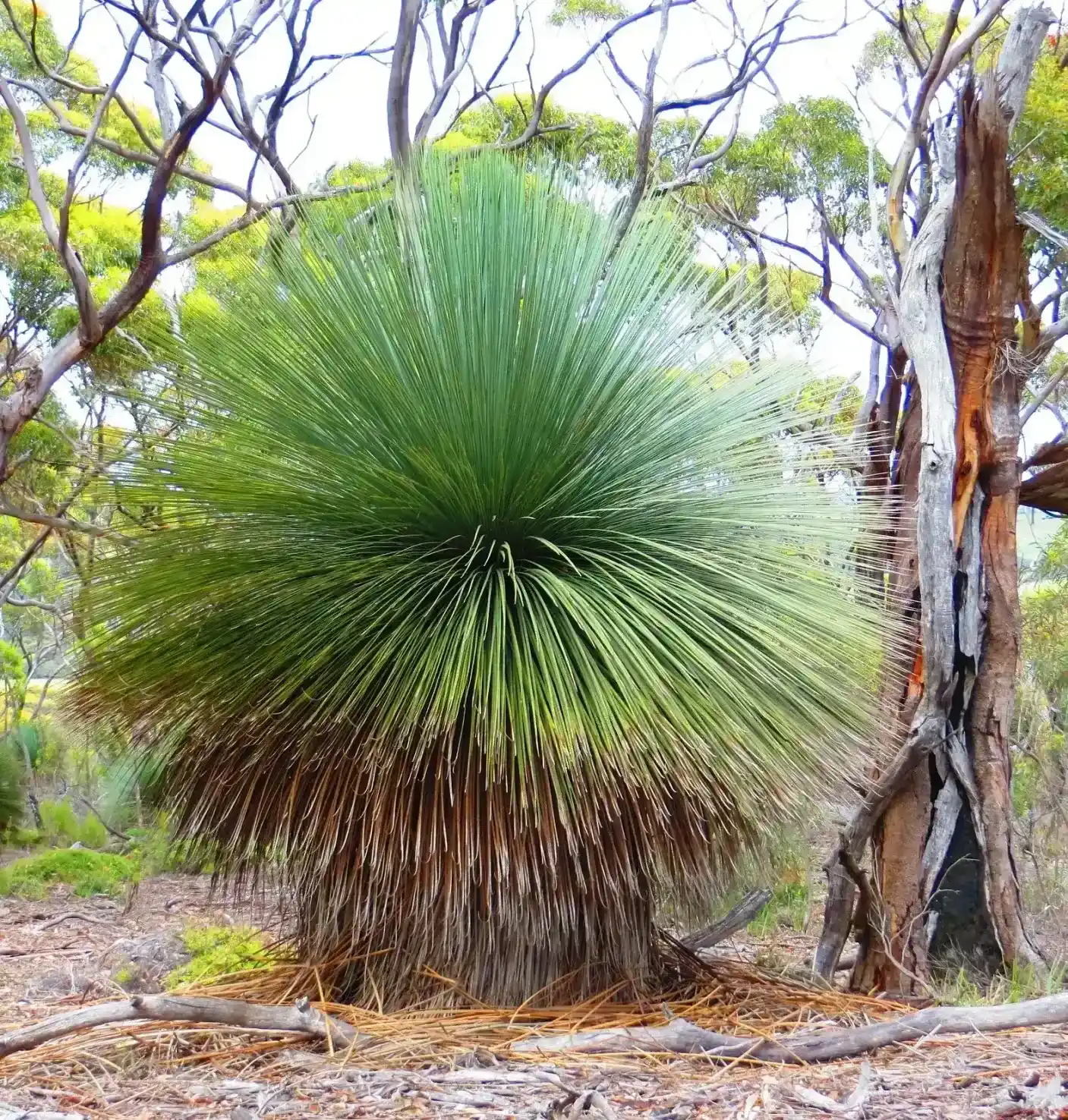
Soil Health & Fertilization
We unite suppliers and green industry professionals worldwide
Okra (Abelmoschus esculentus) is a fast-growing, low-maintenance plant native to Africa that loves hot sunny climates and gives gardeners a bounty of edible pods all summer long.
By Mariam Scott
|Published on June 18, 2025


"Can a vegetable be as beautiful as it is delicious?"
Step into any summer garden, and you may spot the tall, statuesque stems of okra reaching skyward, crowned with soft yellow, hibiscus-like blooms. This popular warm-season crop is favored for its crisp tender, pod-shaped fruits and its wonderful culinary versatility — fried, pickled or simmered in a gumbo. But what many people don’t know is that okra is among the easiest vegetables to grow — and also offers a lot of ornamental value in the garden.
Okra (Abelmoschus esculentus) is a fast-growing, low-maintenance plant native to Africa that loves hot sunny climates and gives gardeners a bounty of edible pods all summer long. Whether you're a backyard grower or trying out a container garden on your patio, okra fits right in with its mix of beauty, bounty, and resilience.
| Common Names | Okra, lady's finger, gumbo |
| Botanical Name | Abelmoschus esculentus |
| Type | Warm-season annual vegetable |
| Height/Spread | 3–6 feet tall, 2–3 feet wide |
| Sunlight Requirements | Full sun |
| Soil Needs | Well-draining, loamy, slightly acidic |
| Watering Needs | Moderately and regularly |
| Bloom Period | Mid to late summer |
| Hardiness Zones | Grown as annual in all zones |

September 25, 2025
9 minute read
September 24, 2025
9 minute read
September 23, 2025
10 minute read
September 22, 2025
9 minute read


Join as a seller and connect with thousands of B2B buyers nationwide!
Sign Up

San Marzano Tomato
San Marzano tomatoes are a source of national pride. But you don’t have to be in Italy to enjoy them. San Marzanos are grown by gardeners worldwide at home for their deliciousness and high yields — especially those who love canning or making homemade sauc

Saskatoon Serviceberry
A Tough and Sweet Native with Year-Round Beauty

Sargent Crabapple
The Sargent Crabapple (Malus sargentii) may be a small tree, but it definitely knows how to make an entrance. Covered in a profusion of white blossoms every spring, this small ornamental tree gets high praise from bees, birds and gardeners alike.

Blackboy
Xanthorrhoea is one of Australia's most recognisable native plants, famous for its striking looks, its slow growth, and its resilience. With its blackened trunk, fountain of grassy foliage, and towering flower spike, it adds an exotic, sculptural element
Okra is a sun-loving, heat-tolerant crop that produces abundantly with basic care. Give it a sunny spot, well-draining soil and regular watering during dry spells. When it starts producing, okra is a vigorous producer. Some varieties can grow more than 6 feet tall, so they may need space and support. In warm climates, you’ll be harvesting pods in as little as 50 to 60 days after planting. For best performance, keep the soil warm and free of weeds.
Okra requires full sun — a minimum of 6 to 8 hours a day. Inadequate light will cause the plants to get leggy, and pod production will suffer. The more sunlight it receives, the more energy it can expend on flowers and fruit. A sunny, south-facing garden bed or patio is ideal for growing strong, productive plants.
Okra likes well-draining, loamy soil that’s high in organic matter. A slightly acidic to neutral pH (6.0–6.8) is best. Mix in compost or aged manure before planting to support vigorous growth and flowering. Avoid heavy clay or poorly draining soils, since this causes root rot and stunted plants.
Okra likes plenty of moisture, especially during flowering and pod development. It is drought-tolerant once established, but uneven watering can produce tough, fibrous pods. Water when the top inch of soil feels dry, trying to keep the soil evenly moist—not soggy. Mulching around the base of the plant helps conserve moisture and suppress weeds.
Okra doesn’t need much pruning, but a bit of light maintenance helps with air flow and production. As the plant grows, removing the lower leaves helps prevent fungal issues and encourages upward growth. In limited space gardens, you can top the plant (pinch the growing tip) when it reaches 3–4 feet to encourage branching and more pod production on side stems. Do not do heavy or aggressive pruning because okra grows quickly and may not respond well to severe cuts.
Okra is grown typically from seed, and under the right conditions, it grows quickly and reliably.
If you live in a cooler zone with a shorter growing season, you can start okra indoors 3–4 weeks before transplanting.
Okra grows well in containers, particularly dwarf or compact types.
As it’s a warm-season annual, okra doesn’t overwinter. In most climates, it’s grown for a single season and then removed at the end of harvest. There’s no need for overwintering unless you’re collecting seeds. In that case, leave a few pods on the plant to dry out fully, then harvest and store seeds in a cool, dry place for next season.
Okra bears beautiful, creamy yellow blossoms, with dark burgundy centers — closely related to hibiscus, to which it’s botanically linked. These blooms appear in mid to late summer and are followed quickly by pod formation. Each flower lasts just a day, but the plant blooms daily if conditions are right. Flowers are self-pollinating but benefit from bee activity.
Okra is hardy and tough, but a few issues can appear:
With its striking flowers, tropical looks, and tasty pods, okra is a standout in both the kitchen and the garden. Whether you’re new to vegetable growing or you just want to add a plant that is both useful and decorative, this warm-weather crop offers beauty and bounty all summer long. With a bit of heat and plenty of sun, okra won’t let you down.
Yes—okra flowers are edible, and you can add them to salads or use them as garnishes.
Some varieties grow 6–7 feet tall, whereas dwarf types only reach about 3–4 feet.
Yes, light feeding with a balanced fertilizer helps support flowering and pod development.
They’ve stayed on the plant too long. Pick them younger for tender texture and better flavor.

Soil Health & Fertilization
Victor Miller

Pest Identification & Prevention
Victor Miller

Lawn Care Tips & Maintenance
Victor Miller

Soil Health & Fertilization
Victor Miller

Smart Irrigation Systems
Victor Miller

Patios, Walkways & Driveways
Victor Miller

Soil Health & Fertilization
Victor Miller

Pest Identification & Prevention
Victor Miller
My Account
Our team is always here to help.
We are open Monday - Friday, 9:00 AM to 4:30 PM PST.